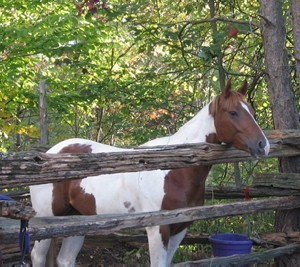
Family of Hermaphroditic Horses Identified
Koko the horse appeared to be a typical mare, but when she began acting overly aggressive and trying to mount her female counterparts, her owner Sam Campbell became suspicious.
Scientists at the University of Guelph discovered that the six-year-old “Paint” is a rare intersex, or sex-reversed, horse. Outwardly, Koko has all the characteristics of a mare but was born with internal testes that were juicing her system with testosterone and making her act like a stallion.
After a barrage of tests at the University of Guelph's Ontario Veterinary College, researchers discovered that Koko was in fact a male horse that appeared female.
The scientists tested Koko's relatives and found her sister Sequoia and her cousin Pandora were also intersex.
Researchers Allan King, BSc, MSc, PhD, Tracey Chenier, DVM, DVSc, and Daniel Villagomez are the first to identify a family of horses with a rare genetic abnormality called pseudo-hermaphroditism, which causes genetically male horses to appear female on the outside.
Initially they thought Koko had an ovarian tumour, which can cause mares to exhibit stallionlike behavior because of heightened levels of testosterone. But when they examined the animal's reproductive system, the researchers found Koko had internal testes (testiculos).
“It was a very exciting discovery,” said Chenier. “To be expecting a tumor but discover an entirely different internal system than anticipated sparked a lot of questions.”
After realizing Koko had internal testes, researchers performed surgery to remove them in the hope that she would become less aggressive.
“Before the surgery she was so aggressive that it was too dangerous to ride her,” said the owner Sam Campbell. “But she is completely different now. She is an incredibly lovely horse.”
Since then both Sequoia and Pandora have undergone the same procedure at the Ontario Veterinary College.
